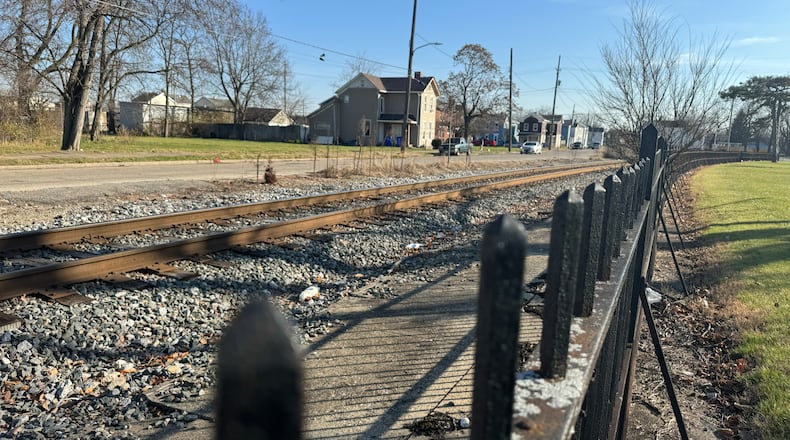Amtrak, the state of Ohio, and other planning organizations will start corridor development work, but the first step is a feasibility plan. The FRA has agreed to pay $500,000 for planning each of Ohio’s four routes. U.S. Sen. Sherrod Brown, D-Cleveland, said the state’s four corridors will receive priority in future funding competitions.
Vice Mayor Michael Ryan, who’s been the city’s liaison with the Amtrak project, said the funding news “is putting us within reach to bring passenger rail back to Hamilton, Ohio,” and called it “a major step in the right direction to make this a reality in town.”
Ryan said both corridors have “major advantages” for Butler County’s capital city.
“The Cardinal is going to open us up to the Midwest because that’s the Chicago and Indianapolis route,” said Ryan, who didn’t think that route would receive study funds. “The 3C+D route is going to open us up to four major cities in Ohio.”
On top of opening the city up to major cities, passenger rail has a potential “huge economic development opportunity” for travel and tourism in Hamilton, known in the state as the City of Sculpture.
“But the biggest thing is that’s a gateway,” Ryan said. “It’s going to allow us to create another gateway into the city, and that’s pretty significant.”
The timing of when the study will begin and how long it could take has not yet been released. Ryan said last week that some information could be known as early as this weekend. However, Ryan believes the studies aren’t likely to begin for a few months.
But he’s hopeful that Amtrak will be picking people up and dropping people off in Hamilton in five years or less ― that’s assuming that everything goes as planned. Amtrak stations in Hamilton would have to be constructed, and the city is targeting Sycamore Street, between South Third and South Fourth streets and adjacent to Symmes Park, for the Cardinal line. The 3C+D line would be next to the relocated former CSX train depot and across from the Maple Avenue and Witt Way intersection.
While the feasibility studies will determine which line or lines are chosen, Ryan said “it’s a benefit no matter what happens.”
“We are ready to service both. We have the property ready. We are as prepared as we can be to make this work,” he said.
The economic impact for Hamilton could be in the tens of millions of dollars, which will begin with any construction of rail lines and train stations, but would also include daily ticket sales and passengers staying overnight in Hamilton hotels, shopping in the city’s downtown and Main Street, and eating at restaurants.
But one concern that Ryan said he’s raised to both Cincinnati stakeholders at Union Terminal and the assistant vice president of Amtrak are the number of freight trains that already run through Hamilton.
The city is looking at constructing a northern Great Miami River crossing and having an accompanying route to provide another route to bypass train traffic. The city’s High-Main corridor is the city’s primary thoroughfare that isn’t impacted by trains, though it is congested with traffic. Traffic can also bypass tracks by way of the South Hamilton Crossing.
“They are telling me there is money in this for the freight railroads they can take advantage of that will make their rails more safe,” Ryan said. “But at the end of the day, the Passenger Rail Act of 1970 supersedes the freight lines. So Amtrak has every right to operate on the freight lines.”
Ryan said, however, CSX and Norfolk Southern could delay, though he added, “I’m hoping that once we do identify the corridors and where we want to put our station, or stations, that we can have a sitdown with rail companies and just try to work together, but (rail traffic) a major concern.”
Ohio Rep. Sara Carruthers, R-Hamilton, plans to meet in January with All Aboard Ohio and the Brotherhood of Locomotive Engineers and Trainmen, as both groups are involved in helping the state make this a reality.
“I want to make sure we get the right working relationships so that you can go to Hamilton to Cincinnati to Chicago to New York to wherever, so that people can get around easily,” she said. “A nice travel way to get to where you’re going, city to city, state to state, and have some decent routes.”
Carruthers said it will be tough with the negotiations with CSX and Norfolk Southern, “but I think they can make it work.”
Ohio Gov. Mike DeWine’s office has previously said that the planning work would help determine the feasibility of passenger rail services in the state. The studies are supposed to help identify how much the services would cost the state and whether the lines would be profitable or would require significant state subsidies to cover operating losses.
Part of the planning work will include identifying capital construction projects needed to initiate or expand passenger rail service to those areas, according to DeWine’s office.
Cox First Media reporter Cornelius Frolik contributed to this story.
About the Author

